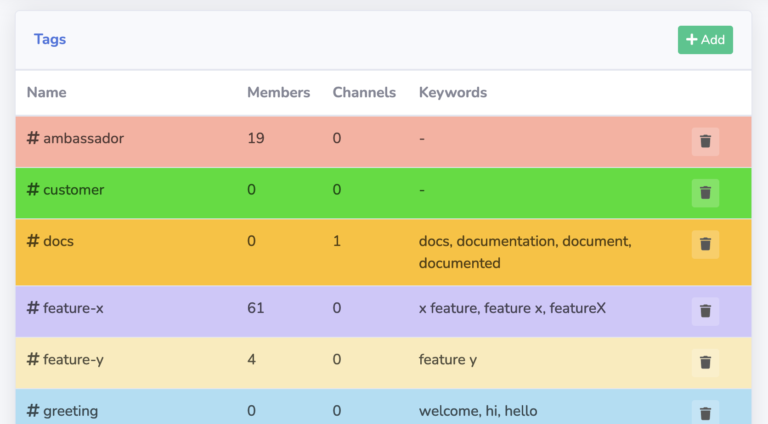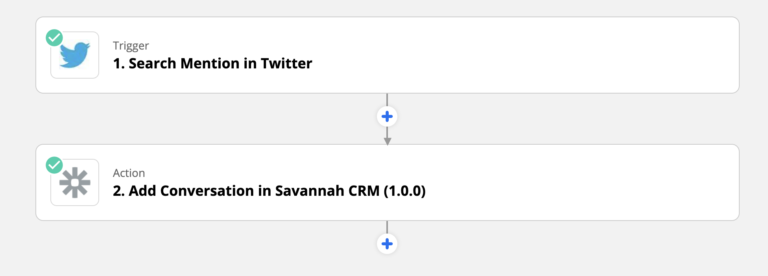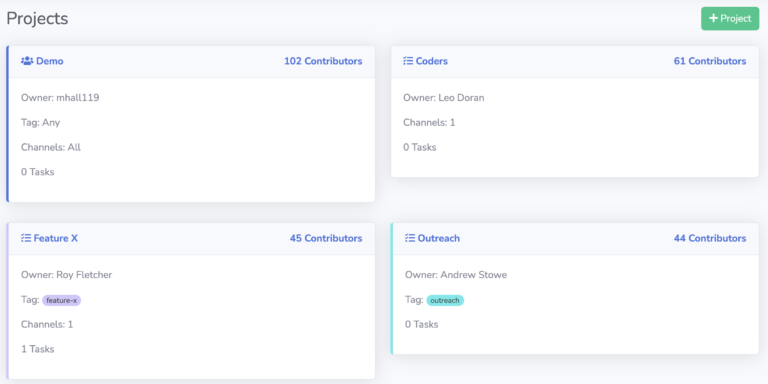In The Art of Community, Jono Bacon describes teams as “the building blocks of community”. As your community grows beyond a few dozen people it becomes harder for them to collaborate and focus in on specific tasks all together. When that happens you can re-invigorate your community by forming teams around common interests and goals. These teams form micro-communities that feed energy and contributions back into your larger community.
Regardless of what kind of team you want to form, the process is the same: Clearly define what you want to do, find the right people to help you do it, give them what they need to be successful, and then keep doing that.
Defining your team charter
Before you do anything else, you need to make a plan. Stop and think hard about what you want to accomplish, what you’re willing to do to accomplish it, and what you’re going to be asking your community members to do. Then put this all down in writing. This will be your pitch deck for the new team, and should include:
- A Mission Statement that explains why the team exists. This should describe the specific needs prompting the creation of the team, and the desired goals that the team will have.
- A Set of Expectations for everybody involved. This goes both ways: what you expect the community members on the team to do, and what those member can expect you (and your backing company or organization) to do. It’s also good to explicitly state here things that are NOT expected from either side.
- A Membership Life-cycle detailing the requirements for members to join the team, how long they are committing to being a part of it (don’t make this open ended, give them a set time period that they can re-up or not), and how new members will be added in the future.
These don’t need to be set in stone. In fact they should all be open to change once you start talking to your potential team members about it. As CMX co-founder David Spinks says “You want them to feel invested in the idea. Better yet, you want them to feel like it’s their idea.” Letting them change your plan means that the final version of it is their idea. Once everybody is in agreement, this document becomes your team’s charter, and you can refer back to whenever you need to answer questions about what you should be doing or why.
Recruiting your team
Choosing the right people to help get your new team off the ground is the most important factor in whether or not you’ll be successful. Unfortunately it’s also the one step where you’ll find the most vague advice, such as “Identify your top contributors” or “Find out who is the most engaged”. Fortunately this is one of the things that Savannah CRM excels at: Giving you actionable insights.
Going back to The Art of Community, Bacon goes on to say “Teams are units of belonging. Members join, are energized by the team’s spirit, and develop a sense of belonging that encourages them to contribute back to the team”.
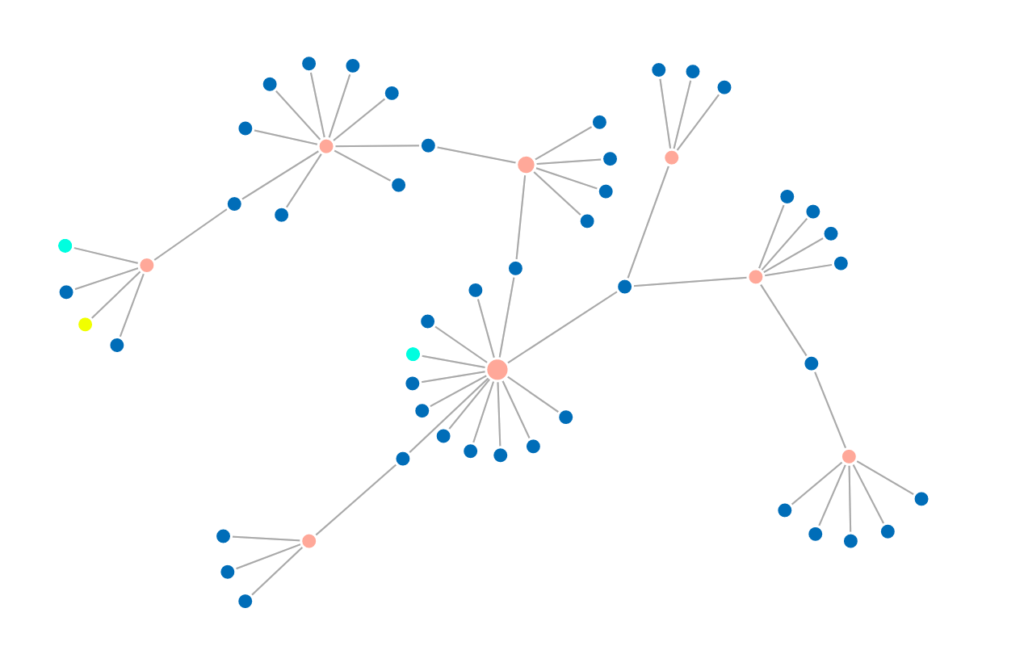
Since belonging is key, whenever I build a new community team the first thing I look for is who can give others that sense of belonging. T to do that I use Savannah’s Connections graph to see who is already connecting people in the space or topic I’m building a team for. Specifically I look for two things: A Heroes Halo, members with a ring of people who have connected with only them, and Weak Ties, those members who have fewer connections but are the critical link between groups of people. You will want both sets of people on your team.
Building for success
In your team charter you should have outlined what you need to provide to the team in order for them to do the things you’re asking them to do. Now it’s time to deliver on that commitment. You need to give your team a platform where they can work together, communicate with each other, and make the impact you assembled them for. Often this means opening up access to existing platforms and tools, or opening up the corporate wallet to buy new ones for them to use.
You’ll need to lead the charge in this too. It’s not Field of Dreams, you can’t just build it and expect them to come. Spinks again has great advice here: “Make sure to add some content to the platform first so that new members don’t have to be the first to post and you can set the example for how to use the platform properly”. For new teams this also means taking the lead in planning and scheduling until someone else is ready to take that over.
And lastly be sure that your team members are being shown appreciation for their work. If you outlined specific benefits or rewards for participation in your charter, make sure those are being honored. But also be spontaneous, give public praise when they’ve completed a big task or reached a significant milestone, celebrate success together with a special get together or video hangout, and send them exclusive swag that has been tailored specifically their team. I like to use Savannah’s Gift Tracking for all three of these, to make sure these things are having the intended impact.
Keep it going!
Even after you have a team running effectively and no longer need to be the one leading the day to day management, you need to remain involved to ensure that their needs continue to be met, communication continues to be healthy, and membership continues to be strong. Scheduling regular check-ins with the team leaders, once a month or once a quarter (at the very least, once a year!) will let you keep your finger on the pulse of the program and respond to any problems before they start to have a negative impact on the team’s mission.
You should also use these opportunities to keep membership in the team fresh. Carrie Melissa Jones, founder of Gather Community Consulting, notes that “Leadership programs have natural up and down cycles. You’ll notice that some members simply cannot take on the commitment that they assumed they could. It’s smart to keep a pipeline of other potential leaders at the ready, so you can usher them in when the need arises.”
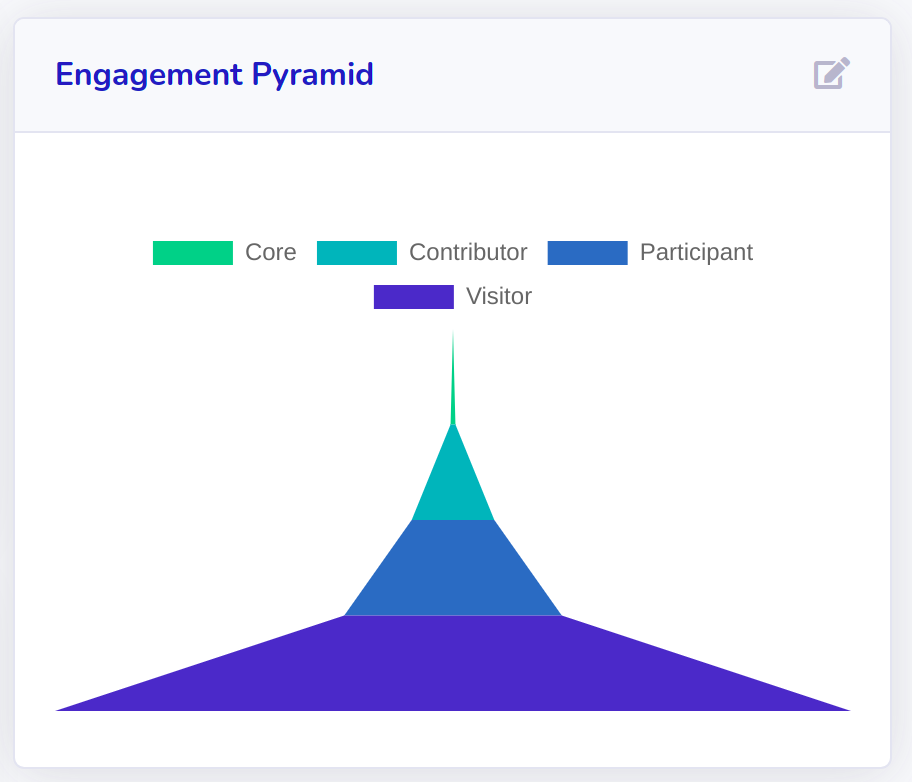
Here again Savannah CRM gives you insight into how healthy that “pipeline” is by showing you how effectively you are moving new members up the Engagement Pyramid to leadership roles within your team’s scope or your community in general. If you have a good onboarding process and roadmap for contributes to level-up within your community, it will be reflected in a healthy Engagement Pyramid and a full pipeline of new team members.
Building teams within your community is a necessary step in scaling that community beyond a small number of people, and realizing the multiplier effect that a Community Manager should be having. With the right plan, people, and follow through, you will give your community teams a solid foundation and ensure that they are successful in meeting both their goals and yours.


